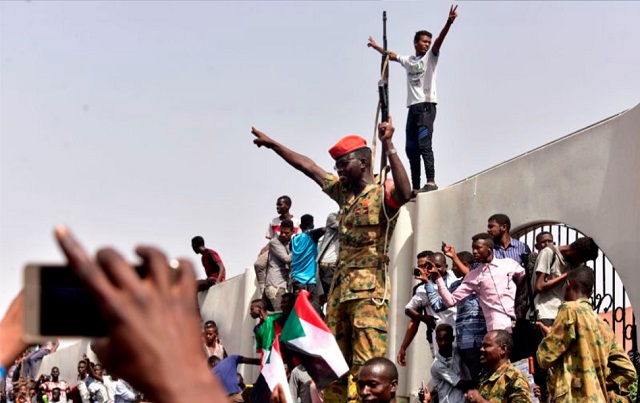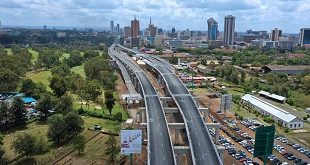
Sudan’s slippery economic slope
Sudan had been on a slippery slope when South Sudan successfully seceded in July 2011. Sudan was a major oil producer from 2000 to 2011. Over this period, it was touted as one of the fasted growing economies in the world by the World Bank with rates of growth over 12% in some years. But the oil revenue this growth depended on came from oil wells that became part of South Sudan in early 2012.
That single move wiped out 80% of Sudan’s oil production. That meant Bashir would now not have up to 60% of the money he had got used to using to buy support, especially from the army generals. Domestic debt grew at an unsustainable rate. The debt-to-GDP ratio rose to over 140% in 2018. As the country started feeling the pinch of foreign exchange scarcity, the government could barely raise money to import fuel and wheat to make bread.
Rather than cut spending, Bashir opted to fill the fiscal gap by printing money. The increase in money supply without matching increases in production, caused inflation to spiral. Without foreign exchange, the central bank set an overvalued exchange rate peg. The IIF estimates that Sudan’s real GDP contracted by 1.1% in 2018. People were becoming poor and private consumption was down nearly 5%, according to IIF.
November 8, 2018 is known in Khartoum, the capital of Sudan as the “Day Money ran out”. On that day, most ATMs in the city run out of cash. Inflation was over 70% and money was losing value by the minute. But the central bank was not printing new money fast enough. There was a liquidity crunch. People could be seen queuing up helplessly outside the empty ATMs. Account holders were bribing cashiers to cash their cheques. Others were chasing after any vans seen delivering money to the banks.
“Why are we suffering like this to get our money?” Ahmed Abdullah, a 42-year-old government worker was heard asking.
The government was staring economic collapse in the face and public anger was mounting. Bashir was losing control of the country. His regime was bankrupt and unpopular.
The Sudanese central bank had been controlling the depreciation of the Sudanese pound against the dollar by restricting on access to foreign exchange. In October 2017 the U.S. has offered some reprieve by lifting of two decades of trade sanctions. But it appears to have been too late for Bashir.
In October 2018, Bashir desperately hiked the exchange rate from 29 to 47.5 Sudanese pounds per USD. Its objective was to make it realistic because that was closer to the kibanda parallel forex market rate. The move sent inflation even higher. The price of a kilo of flour rose 20%, beef 30%, and potatoes 50%. Sudan’s inflation stood at more than70%. It was one of the world’s highest rates. Now the central bank’s policy was backfiring. People were losing trust in the banks.
Political upheaval and uncertainty, economic mismanagement, and rampant corruption destroyed the economy and Bashir’s regime. Combined with a large and young population plagued by unemployment, these factors became a powder keg.
Bashir must also have realised that he could not easily fix the economy. He appealed to the Arab world; Doha, Riyadh, Abu Dhabi, and Cairo but returned empty handed. He turned Moscow and got only promises. Even African leaders appeared to desert Bashir.
Instead U.S. senior envoy, Cyril Sartor, who is the Senior Director for Africa at the National Security Council, was in Khartoum late February and Qatar’s Minister of Defence, Khalid bin Mohammad Al Attiyah was there in March. One issued Bashir with a stern warning not to use force on the protesters and the other reportedly counseled substantial changes in state policy before any rescue money.
But he was unwilling to let anybody else step in.
Divisions in ruling party
Bashir had appointed a new central bank governor to deal with inflation. He had also named a new prime minister and announced a 15-month economic reform plan. So he turned to what he thought he was best at fixing – the politics.
Bashir’s ruling party had already nominated him to run unopposed as its presidential candidate for reelection in 2020 but there were reports of divisions within the ruling National Congress Party (NCP). But senior party members were reportedly mooting a move to censure Bashir. The Islamist wing, specifically reportedly favoured giving the protesters actual concessions.
Bashir could offer concessions. In 2013, following large protests by university students unhappy with the state of the economy, Bashir promised not to stand for election in 2015. But he also unleashed paramilitary troops that killed hundreds of protesters. And he had gone on to stand and win reelection by 94% of the vote in a roundly condemned sham election.
This time Bashir sent security forces to ransack offices of professional bodies such as doctors who were leading the protests. Security forces arrested numerous opposition leaders and protesters in overnight swoops and morning raids.
When protesters did not bite the bait of national dialogue Bashir he made another concession. The Parliament, which is dominated by his ruling party, would now not amend the constitution to allow him to run in 2020. But the voters were not fooled. Even more poured on to the streets where they were met with teargas and live bullets from the security forces. According Human Rights Watch, over 50 people were killed over this period.
 The Independent Uganda: You get the Truth we Pay the Price
The Independent Uganda: You get the Truth we Pay the Price






The title is of this article is “It cannot happen here”, however, the details do not speak to this title other than in passing. I would have expected that after discussing the events in Sudan, we author would now contextualise them and bring it to the Ugandan situation. I waited and waited and did not see that happening. This is where our journalists fail us – lack of analytical rigour. Yes you can report the news – and then so what? What do we as readers learn from the story. You pick up the headline and fail to relate with it in the detail of the story!!!
Ignatius, Just re-read this. Carefully and word per word go through it over.
The author drove the point to home i believe.
The analysis that I would have expected is comparison between the previous protests in Uganda and those that happened in Sudan. How did they differ and what were the similarities? Where did those in Sudan succeed where the ones in Uganda failed? Going forward what can the protest organisers in Uganda learn from their Sudan counterparts? Kitto if you found all these analyses, then perhaps I did not read the article properly. But I am sure I read from beginning to the end and did not find anything analytical in line with the title of the article.
Indeed I believe that this nonsense can’t happen in Uganda. Looking at the aftermath of the different coups that happened in the African continent, the resultant has always been disastrous to the economies.
There if Ugandan are wise, they wouldn’t choose the same path. But all in all, the fate lies in Museveni’s hands, if he truly loves the country as he claims, I really feel he should handover to another person before such a thing happens.